Orange's 1921 hospital offered modern equipment with first-class accommodations
Last updated 1/17/2023 at 7:21pm
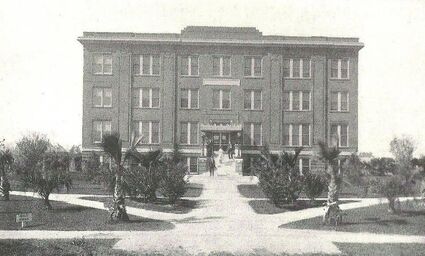
Frances Ann Lutcher Hospital was built in Orange in 1921 at a cost of $300,000 and featured modern equipment and luxuries for patients and staff. The four-story red brick building was north of Green Avenue between Second and Third Streets, off Pine Avenue. The hospital's nursery is also pictured, along with a portrait of Mrs. Lutcher.
The description of Orange's new hospital in 1921 sounds like a peaceful retreat for anyone, not just those needing medical care.
"This delightful hotel for the sick is situated in one of Texas' oldest towns-Orange-looking out over the gardens and housetops to wide flat distances fringed by tall pines, while just out of sight the Sabine River winds towards the Gulf of Mexico and is an inland waterway of great commercial value," said a slick brochure booklet printed for the opening of the Frances Ann Lutcher Hospital.
The hospital was one of the city's bragging points and was a gift from the widow of timber baron Henry Jacob Lutcher. The late historian Dr. Howard Williams said in his book "Picturing Orange" that Mrs. Lutcher had seen horrible accidents at the lumber mills that once lined the Sabine River. Two of those mills were owned by the Lutcher and Moore Lumber Company, founded by her husband.
Mrs. Lutcher used her fortune to make her namesake hospital full of then-modern equipment and luxuries for the staff and patients. The Lumber World Review Magazine in 1921 reported on her hospital and said it cost $300,000. According to the U.S. Bureau of Labor Statistics inflation calculator, that would be about $4.7 million today.
"This hospital was constructed with the sole purpose of building a thoroughly modern hospital for surgical and medical patients," the booklet said. "In the building and equipment of the hospital no expense was spared."
For the grand opening of the hospital, Mrs. Lutcher had a slick-page booklet printed with more than a dozen photographs and pages of descriptions of the furnishings and services. The Orange Public Library has a copy of the booklet in the reference section for viewing, but it cannot be checked out.
The four-story hospital was built between Second and Third streets, yards south of Green Avenue. The building was considered fireproof because it was constructed of reinforced concrete with siding of red brick. It was also equipped with an automatic elevator that reached all floors.
But most important, the hospital had modern equipment, including electricity. "Edison himself would be delighted at the effective use of electricity," the hospital booklet said.
That was especially important for surgeries. Oldtimers in Orange years ago recalled a small hospital-clinic that had a skylight in the surgical room to let in light. Surgeries were difficult for doctors having to use gaslight or candlelight at night or on cloudy days.
Frances Ann Lutcher Hospital had two operating rooms, both fitted with electricity. One had a skylight, the other had a "Noshado" light system light "so that the emergency operations at night or on cloudy days can be carried on with perfect safety."
The operating complex had a surgeons' dressing room with lockers, a "shower bath of porcelain," and lavatories custom-made with "knee and foot controls."
The landscaped grounds included a residence for the chief physician plus a spacious, two-story house built for the nurses who were studying and working at the hospital. After three years of courses and work, a woman earned the title of "registered nurse."
The booklet pictured the nurses in white dresses with capes and the stiff, white old-fashioned nurses caps. The furnishings in the house included a piano and a Victrola. The house burned in the late 1970s, but by then was not used for nurses and had been sold to a private owner.
Physicians included the late Dr. Wynne Pearce, who delivered thousands of babies during his nearly 60 years of medical practice here. The doctors were treated like kings. Dr. Williams, who was also a physician, who moved to Orange in 1953, once remembered the physicians dining room having gourmet meals served on china with silverware.
The grounds had sidewalks between the main hospital and the two residential buildings. Patients in wheelchairs could be pushed on the sidewalks to get sunshine and fresh air among palm trees and live oak trees that were planted.
Orange was the only city in the county in 1921 and had a population of 9,212. The county's total population was 15,379, showing that 6,167 people lived outside the city limits.
The hospital had an emergency room with X-Ray machine, along with 60 rooms. In those days of racial segregation, 44 rooms were for white patients and 16 were for "colored." The booklet said all linens were sanitized through a specially-designed laundry. But because of the racism at the time, the booklet assured white people the linens used by "colored" had an embroidered red mark and would not be used for them.
Each floor had a glassed-in sunroom and the booklet shows the sunrooms furnished in stylish wicker chairs and tables. The booklet described it as "reed furniture, cretonne covered."
"Artistic bird cages filled with canaries who vie in trills with the mockingbird and cardinals in the beautiful grounds give a touch of hominess that is very comforting," the booklet spoke about the porches.
But like any medical facility, Frances Ann Lutcher Hospital grew outdated. The influx of defense workers during World War II led the federal government to quickly build "City Hospital" and it became the city's community center after the Orange Memorial Hospital opened in 1958. Orange Memorial was a joint community-industry project with the hospital owned by the county and operated by a non-profit community board. The county sold Orange Memorial to the Baptist Hospital system in 1988 and it closed for in-patients in 2015.
Frances Ann Lutcher Hospital stayed open until 1966 and was closed. It was demolished in 1972 and later a nursing home was built on the site. The nursing home has since closed and is now in disrepair.
Huge, century-old live oak trees, though, still line the block along Pine Avenue and Second and Third streets. They are the remainders of the original trees planted for the landscaped Frances Ann Lutcher Hospital.


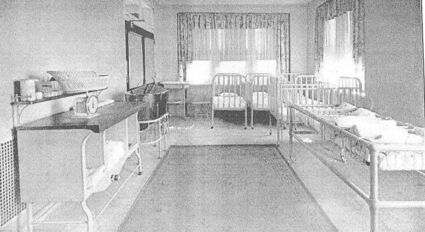
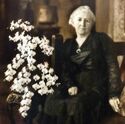
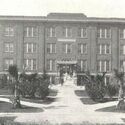
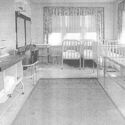













Reader Comments(0)